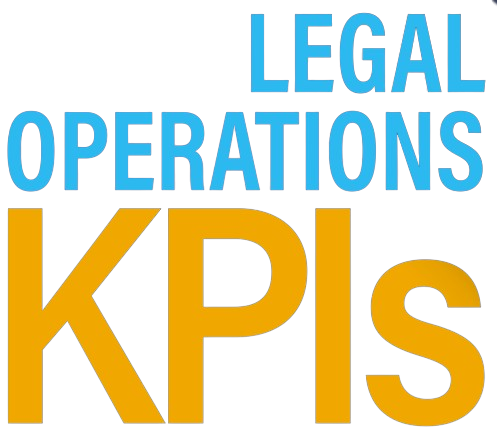Bienvenido(a) a






Por Michelle Kovitch
Okay, so this is part four. Today we're going to talk about law firm and vendor management, which makes me think of money. Tough topic, but we need to address it. Unfortunately, there's so much in Mori's book that is packed into this section to help you with that. So the first thing I want to do, I'm going to get on soapbox here for just a second because he references the word partner in here. Now, many of you know that I come from the legal background. I've relied on legal service providers, I've relied on technology providers all to help support my team. But if your outside counsel, your legal service provider, your technology providers are not coming alongside you and linking arms with you and doing what is in the customer's best interest, move on, because there are plenty of us out there that want to do that.
So let me give you an example of some of the 15 different types of findings that Mori has in this section. These are some of them that spoke to me. Average Vendor Response Time, findings on the Average Rate Change, Timekeepers by Vendor. Oh, this is a good one. Revolving Door Timekeeper Cases. I hadn't even thought about that before. Alternative Fee Arrangement matter analysis. So there's 15 of them in this section. Again, once you get to the point where you've identified your findings, then you want to move on to what are the limitations where we're highlighting the challenges or the constraints that are associated with those particular findings that you want to be looking at the future targets. So these are the goals for making adjustments in the future and changing what those trends look like.
And then the key influencers that really help you dig into why is. So, for example, let's take the vendor response time findings. You're looking at it and you're just trying to figure out why are these findings the way that they are. Well, one of the things that Mori tells you to go take a look at is are you truly partnering and investing in the process by pulling up a chair to the table and collaborating with your providers, having candid, transparent, and really what I think is sometimes difficult conversations that you have to have that you have to work through so that we can align with the objectives.
And then a year from now, maybe, let's say you're doing a review once a year, a year from now, you can identify, okay, are we meeting these KPIs and making sure that we're growing together as partners? So another thing that I love in here is the consistency in the book in terms of the workflows. It's just amazing. Because although the findings are different and the data that you're putting in there is different and the formulas are different, the workflows seem to be remaining the same. And then in terms of coming out of it the other side and looking at the challenges, those limitations, looking at the future targets that you want to have, looking at the trend analysis, all of these different things, it's just consistent.
So if you latch onto a couple of things, like, let's say there's a couple of things in here that speak to you and you have support from the top down, in other words, to go spend some time on this and really be pumping in the data and diving into it. Once you do it a couple of times, the rest of them are going to seem easy because you've established a workflow and you're following the same type of infrastructure that Maurice outlined here for you.
Just a reminder, when you get your digital version, you want to log in. You want to log in so that we can collaborate. We want to be submitting our comments. We want to be sharing knowledge as a community. We're always going to be better together, especially when we're growing. We want to be able to lean on each other. Also, legal week, if you want to come by the booth, get a copy of your book, meet Mori, maybe have a cocktail with us, and then next week we're going to be talking about cross-functional collaboration. So that's a lot. Almost like looking for that perfect unicorn that can go collaborate across the different business units and have success, if you will. But anyway, I hope all this has been helpful for you. Make sure that we're engaging on the comments again. Go into that digital version and have a great day. Bye.
Bien, esta es la cuarta parte. Hoy vamos a hablar del bufete de abogados y gestión de proveedores, lo que me hace pensar en dinero. Es un tema difícil, pero debemos abordarlo. Por desgracia, hay tanto en el libro de Mori que se incluye en esta sección para ayudarte con ello. Así que lo primero que quiero hacer, voy a subirme al estrado aquí solo para un segundo porque hace referencia a la palabra socio aquí. Muchos de ustedes saben que procedo del ámbito jurídico. He confiado en proveedores de servicios jurídicos, he confiado en todos los proveedores de tecnología para ayudar a mi equipo. Pero si su abogado externo, su proveedor de servicios jurídicos, sus proveedores de tecnología no se ponen a su lado y unen sus brazos a los suyos y hacer lo que más convenga al cliente, seguir adelante, porque somos muchos los que queremos hacerlo.
Así que permítanme darles un ejemplo de algunos de los 15 tipos diferentes de hallazgos que Mori tiene en esta sección. Estas son algunas de las que me han hablado. Tiempo medio de respuesta del proveedor, conclusiones sobre el cambio de tarifa media, cronometradores por proveedor. Esta es buena. Casos de cronometrador de puerta giratoria. Ni siquiera había pensado en eso antes. Análisis de los acuerdos alternativos de remuneración. Así que hay 15 en esta sección. De nuevo, una vez que hayas identificado tus hallazgos, entonces quieres pasar a cuáles son las limitaciones en las que estamos destacando los retos o limitaciones asociados a esas conclusiones concretas que quieres estar mirando a los objetivos futuros. Así que estos son los objetivos para hacer ajustes en el futuro y cambiar el aspecto de esas tendencias.
Y luego los influenciadores clave que realmente te ayudan a profundizar en el por qué es. Tomemos, por ejemplo, las conclusiones sobre el tiempo de respuesta de los proveedores. Lo estás mirando y solo estás tratando de averiguar por qué estos hallazgos son como son. Bueno, una de las cosas que Mori te dice que veas es si realmente asociarse e invertir en el proceso acercando una silla a la mesa y colaborar con sus proveedores, siendo francos y transparentes, y realmente lo que creo que a veces son conversaciones difíciles que tienes que hay que trabajar para que podamos alinearnos con los objetivos.
Y luego, dentro de un año, tal vez, digamos que estás haciendo una revisión una vez un año, dentro de un año, puedes identificar si estamos cumpliendo estos indicadores clave de rendimiento y si estamos logrando los resultados esperados. ¿Seguro que estamos creciendo juntos como socios? Así que otra cosa que me encanta aquí es la coherencia del libro en cuanto a los flujos de trabajo. Es increíble. Porque aunque los resultados son diferentes y los datos que se introducen son diferentes y las fórmulas son diferentes, los flujos de trabajo parecen seguir siendo los mismos. Y luego en términos de salir de ella el otro lado y mirando los retos, las limitaciones, los objetivos futuros que se persiguen. quieren tener, mirando el análisis de tendencias, todas estas cosas diferentes, es simplemente consistente.
Así que si te aferras a un par de cosas, como, digamos que hay un par de cosas aquí que te hablan y tienes apoyo de arriba abajo, en otras palabras, para pasar algún tiempo en esto y realmente estar bombeando en los datos y sumergirse en ella. Una vez que lo hagas un par de veces, el resto te parecerá fácil porque has establecido un flujo de trabajo y sigues el mismo tipo de infraestructura que Maurice esbozó aquí para ti.
Te recuerdo que cuando recibas tu versión digital, debes iniciar sesión. Quieres iniciar sesión para que podamos colaborar. Queremos presentar nuestros comentarios. Queremos compartir conocimientos como comunidad. Siempre vamos a ser mejores juntos, sobre todo cuando crecemos. Queremos poder apoyarnos unos en otros. También, semana legal, si quiere pasar por la caseta, conseguir un ejemplar de su libro, conocer a Mori, tal vez tomar un cóctel con nosotros, y luego la próxima semana vamos a ser hablando de colaboración interfuncional. Así que eso es mucho. Casi como buscar ese unicornio perfecto que pueda ir a colaborar a través de las diferentes unidades de negocio y tener éxito, si se quiere. Pero en fin, espero que todo esto te haya servido de ayuda. Asegúrate de que estamos participando en los comentarios de nuevo. Entra en esa versión digital y que tengas un buen día. Adiós.
Para acceder al contenido completo de este y otros videos, por favor, tómate un momento para regístrate o inicia sesión.